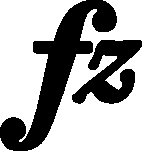



|
b. 243-244
|
composition: Op. 43, Tarantella
..
In FC3 the slur ends at the end of b. 243. In all the remaining sources it extends over to the chord on the first beat of b. 244. category imprint: Interpretations within context; Differences between sources issues: GE revisions |
|||||||||||||
|
b. 243-244
|
composition: Op. 39, Scherzo in C♯ minor
..
In FE, the indication leggiero has the abbreviated form (leggier.) and precedes the beginning of the quaver passage. In EE it is missing altogether, which may reflect the notation of the hand-written base text or may simply be an oversight. For our main text we take the notation of GC (inaccurately reproduced in GE). category imprint: Differences between sources issues: Inaccuracies in GE , Inaccuracies in FE |
|||||||||||||
|
b. 243
|
composition: Op. 39, Scherzo in C♯ minor
..
The fact that category imprint: Differences between sources |
|||||||||||||
|
b. 243
|
composition: Op. 39, Scherzo in C♯ minor
..
The slur is surely inaccurate in GC and most probably inaccurate in EE. Written with a bold strike of the pen, that slur had probably been present in the autograph. category imprint: Differences between sources issues: Inaccuracies in GC |
|||||||||||||
|
b. 243-249
|
composition: Op. 39, Scherzo in C♯ minor
..
Differences between the sources as far as the range of the hairpin mark is concerned, although pronounced, are most probably accidental. Somewhat delayed (bar 244) beginning of the category imprint: Differences between sources issues: Errors of GC |








 in
in 







 mark in
mark in